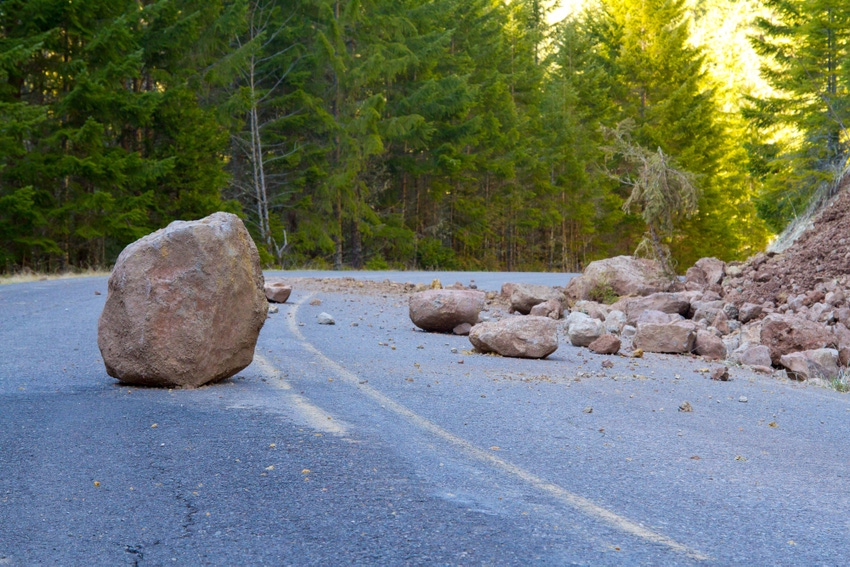
When it comes to predicting the weather, there is little question that science plays a major role. But meteorologists will be the first to tell you that when it comes to predicting El Niño or La Niña Southern Oscillation (ENSO) systems, most bets are off.
After a series of devastating and deadly wildfire events across California this year, the advent of December and the arrival of the traditionally wet winter season in many parts of the state is a welcome sign. But after two years of exceptionally dry conditions and with the outbreak of a series of major wildland fires that have created a chain of patchwork burn zones across the state, fears over serious mudslides and unexpected environmental issues are surfacing as heavy rains cascade across fire-scarred slopes that are bare of vegetation.
Already a trio of winter storms that blew in from the Pacific Northwest have triggered dangerous mudslides in some areas including the forced closure of a key coastal highway near Malibu, a stretch of Interstate 5 north of Los Angeles, and evacuations in some areas that recently suffered severe burn damage as a result of wildfire. But with the winter rainy season just ramping up, concerns are mounting over additional negative effects.
Contrary to popular belief, however, an El Niño system may not bring extreme wet conditions as once believed. In late October, the National Weather Service Climate Prediction Center predicted the winter of 2018-19 could bring above-average temperatures to the northern and western United States, and it's likely wetter-than-average conditions in parts of the South and East. This could mean the effects of an El Niño system in California this year may not result in an exceptionally wet season – though it might.
Snow storms that barreled into Northern and central regions of the Sierras since Thanksgiving have increased confidence that El Niño conditions may persist throughout the winter season. Already California statewide was at 104 percent of the normal level in the mountains as of Dec. 10, and more is expected in the weeks ahead. But winter snows are not the concern for those facing possible mudslides. Rainfall caused by a strong El Niño can be problematics to areas hit hard by fire.
According to a National Oceanic and Atmospheric Administration (NOAA) and U.S. Geological Survey (USGS) hydrology report, once the smoke clears from a wildfire, the danger is far from over. Other hazards, such as flash floods and debris flows become the focus of concern. Areas recently burned by wildfires are particularly susceptible to flash floods and debris flows during rainstorms regardless their duration throughout the season.
Joshua West is an associate professor of Earth Sciences at the University of Southern California Dronsife and an expert in debris flow. He says when fire strips vegetation from steep hillsides, heavy rains can create the risk of mudslides and debris flows with little notice.
For example, earlier this year a mudslide in Montecito following the Thomas Fire resulted in the death of at least 21 people and the injury to some 100 others. West says landslides, mudslides and debris flows can develop quickly on slopes absent of vegetation when the rains begin to fall, and often regardless how much rain is involved.
“Most important is how quickly rain falls. The amount of rain is, of course, important, but if it rains hard quickly, it can and often does result in the risk of mudslides regardless the volume of rain,” West observed.
He points out that not all fire-burned slopes are the same. The risk and severity of mudslides depends on several factors, including burn intensity, the grade of the slope and the type of soil.
The intense heat of a wildland fire across a landscape populated by dense vegetation results in a developing hydrophobic layer in the soil. The leaves on most vegetation sports a waxy substance that are released when exposed to high heat and fire. This wax mingles with the soil, generally penetrating soils up to several inches below the top soil. Rainfall will quickly soak into the soil until it hits this waxy layer and then begins to accumulate on top, creating a soupy mixture that easily slips down a slope like a child on a playground slide sitting on wax paper.
Now that trees and other vegetation no longer serve to hold soil in place, the result can be a mudslide that will gather anything in its path including burned debris, causing a deadly mudslide that is virtually unstoppable.
When this wall of mud and debris reaches lower levels it flows in the path of least resistance, meaning in river and creek beds and through canyons. These debris flows can become even more powerful as they collect additional material. Much the same as a snowball rolling down a slope can contribute to an avalanche.
Depending on where your nut orchard is located, whether in the high country where landslides, mudslides and debris flows are more likely or simply in an adjacent area that may depend on access through such areas, the concern for threats after a season of extreme wildfires remain a concern. Rebuilding burned areas, especially including replanting of vegetation and forest land, is the only hope of avoiding prolonged dangers from after-fire risks.
About the Author(s)
You May Also Like






